The Complete Guide to DIY Phone Case Vending Machine ROI in 2025
In today's fast-paced retail world, vending machines are no longer just for snacks and drinks — they're turning into profit-generating mini businesses. One of the hottest trends? DIY phone case vending machines. These sleek, automated vending machines let customers design and print custom phone cases on the spot, creating a mix of fun, convenience, and personalization.
But before you jump in and invest, you'll want to know one key thing: Will it make money? That's where ROI — Return on Investment — comes in.
In this complete guide, we'll explain what ROI is, how to calculate it, and how to maximize your profits with a DIY phone case vending machine.
1 Why Phone Case Vending Machines Are a Hot Business Opportunity
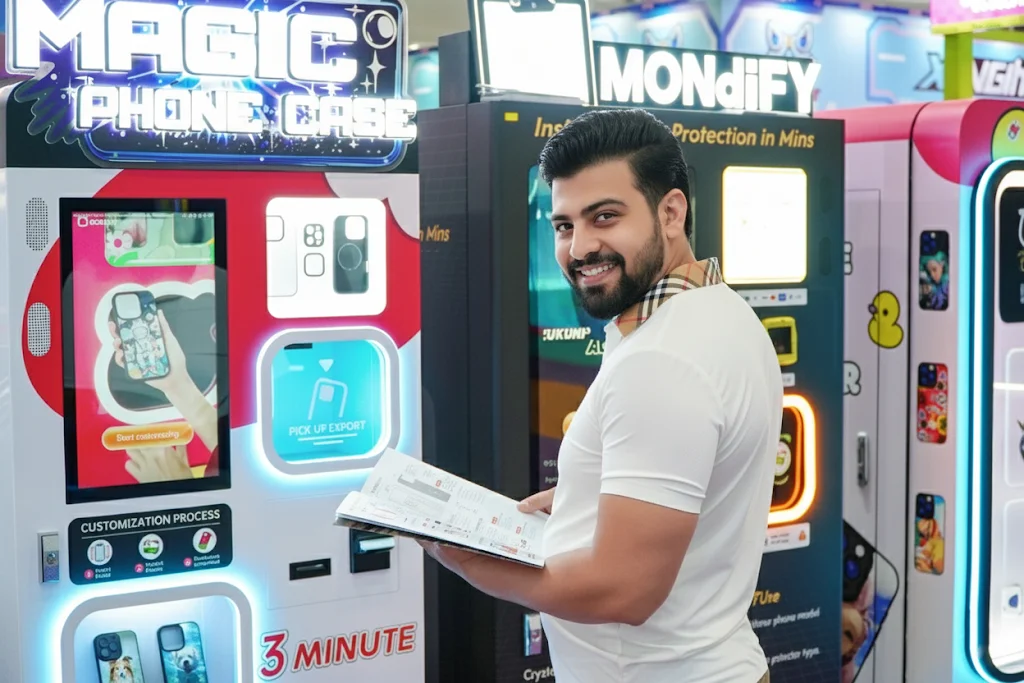
When it comes to running a business—especially something as innovative as a DIY phone case vending machine—numbers tell the real story. While sales revenue might look exciting on paper, it doesn't necessarily mean the business is truly profitable. That's where Return on Investment (ROI) steps in as the most reliable indicator of success.
1. A Market with Endless Demand
- Smartphone ownership is nearly universal — With over 6.8 billion users worldwide, the customer base for phone cases is massive and constantly growing.
- Cases are a recurring purchase — People replace cases for style, protection, or to match new phone models, often multiple times a year.
- Impulse buying is common — Seeing an eye-catching case in a vending machine can trigger an unplanned purchase, especially in high-traffic locations.
2. High-Profit Margins Compared to Other Vending Products
- Low sourcing cost — Many wholesale phone cases cost between $1 and $5, even for premium materials.
- Strong retail value — Resale prices range from $15 to $30, giving margins of 70–85%.
- Better than snacks or drinks — Unlike consumables, phone cases don't have expiration dates, reducing waste and maximizing profitability.
3. Automated Retail Experience
- Always open for business — Sales can happen any time of day, whether it's a traveler at 3 a.m. or a student rushing to class.
- Minimal staffing required — Machines only need occasional restocking and maintenance.
- Convenience for customers — Instant availability solves last-minute needs, like replacing a broken case on the spot.
2 Understanding DIY Phone Case Vending Machine ROI
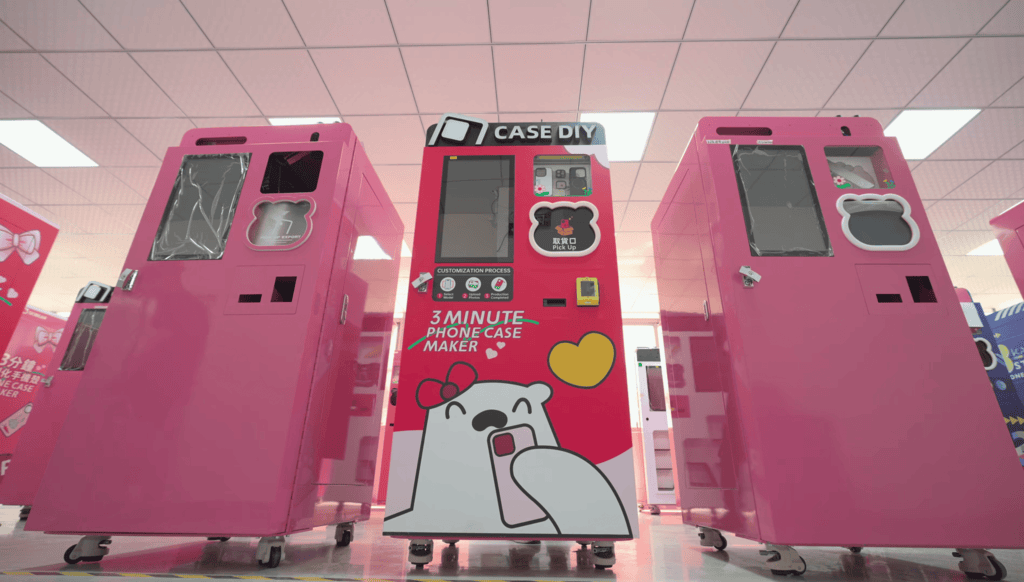
When applied to vending machines, ROI doesn't just measure profitability — it also reveals how fast you can break even.
Why ROI is the ultimate measure of business profitability
-
It Shows the True Profitability
ROI goes beyond just total sales. It tells you how much profit you're actually making compared to the amount you've invested. For instance, earning $10,000 in sales might sound impressive, but if your costs are $9,000, your ROI is far from ideal. -
It Helps Compare Different Opportunities
Whether you're deciding between placing your vending machine in a shopping mall or a busy university campus, ROI lets you compare which option delivers better returns for the same investment. This makes it easier to choose the most profitable path. -
It Encourages Smart Decision-Making
Tracking ROI regularly ensures you don't get stuck with poor-performing strategies. If a location or pricing model isn't delivering, the ROI figure makes that clear, prompting you to pivot quickly. -
It's a Universal Business Metric
ROI works across all industries and business models, meaning you can benchmark your DIY phone case vending machine against other ventures. If your ROI beats that of typical retail or e-commerce setups, you know you're on the right track.
In short, ROI doesn't just show if you're making money—it reveals how efficiently you're turning investment into profit. For DIY phone case vending machine owners, that clarity is the key to scaling smartly and maximizing returns.
Why DIY phone case vending machines have high ROI:
- High unit profit margin – A custom phone case can sell for $20 or more, often at a markup of 7–8× the production cost.
- Low labor costs – No staff needed; the machine runs automatically 24/7.
- Constant availability – Sales can happen anytime, day or night.
Comparison with traditional vending machines:
| Factor | DIY Phone Case Machine | Snack/Drink Machine |
|---|---|---|
| Profit per sale | $15–$18 | $0.50–$1.50 |
| Break-even time | 1–3 months | 12–18 months |
| Inventory lifespan | Long (no expiry) | Short (perishable) |
| Labor cost | None | Restocking & cleaning |
3 The DIY Advantage – Why Build Your Own Machine?
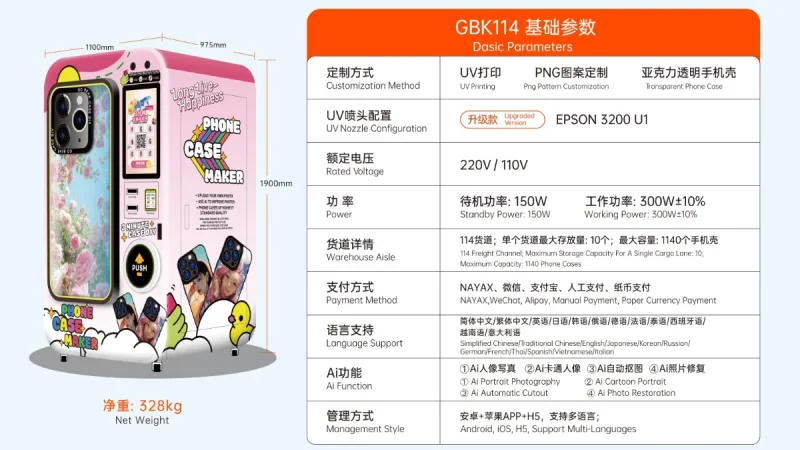
Building your own phone case vending machine gives you a unique edge in this competitive market. Instead of relying on pre-made, one-size-fits-all machines, a DIY approach lets you customize every aspect to perfectly fit your business needs and target audience.
Customized Design Tailored to Your Business
Perfect Fit for Your Products
You can design shelves and compartments that precisely fit different phone case sizes and packaging styles, maximizing display appeal.
Branding Opportunities
Customize the machine's exterior with your logo, colors, and style to reinforce brand recognition and attract customers.
Build a Future-Ready Business Model
-
Scalability
Easily replicate or modify your DIY machine design to open multiple locations without high costs.
-
Customer Engagement
Tailor machines to specific demographics or locations for better engagement and sales.
-
Stay Ahead of Trends
Your DIY approach keeps you agile in a fast-changing market, ready to incorporate new tech or products quickly.
4 How to Calculate ROI for a DIY Phone Case Vending Machine
To know if your investment makes sense, follow these steps:
Step 1: Determine Total Investment
Include:
-
Machine cost – Purchase price of the vending unit.
-
Shipping & installation – Freight, setup, and any location modification.
-
Initial consumables – Blank phone cases, ink cartridges.
-
Licensing & permits – If required by your region.
Step 2: Estimate Monthly Revenue
Factors to consider:
-
Average selling price – For example, $20 per case.
-
Sales volume – E.g., 10 cases per day × 30 days = 300 cases/month.
-
Seasonal spikes – Holidays, back-to-school seasons, tourist months.
Step 3: Subtract Operating Costs
- Consumables (cases & ink) – often less than $2–$3 per unit.
- Electricity – minimal for modern machines.
- Occasional maintenance.
Step 4: Apply the ROI Formula
Example:
- Investment: $8,000
- Monthly sales: 300 cases × $20 = $6,000 revenue
- Monthly costs: $900 (materials + utilities)
- Monthly profit: $6,000 – $900 = $5,100
ROI per month: $5,100 ÷ $8,000 × 100% ≈ 63.75%
At this rate, you could break even in less than two months.
5 Top Factors Affecting ROI
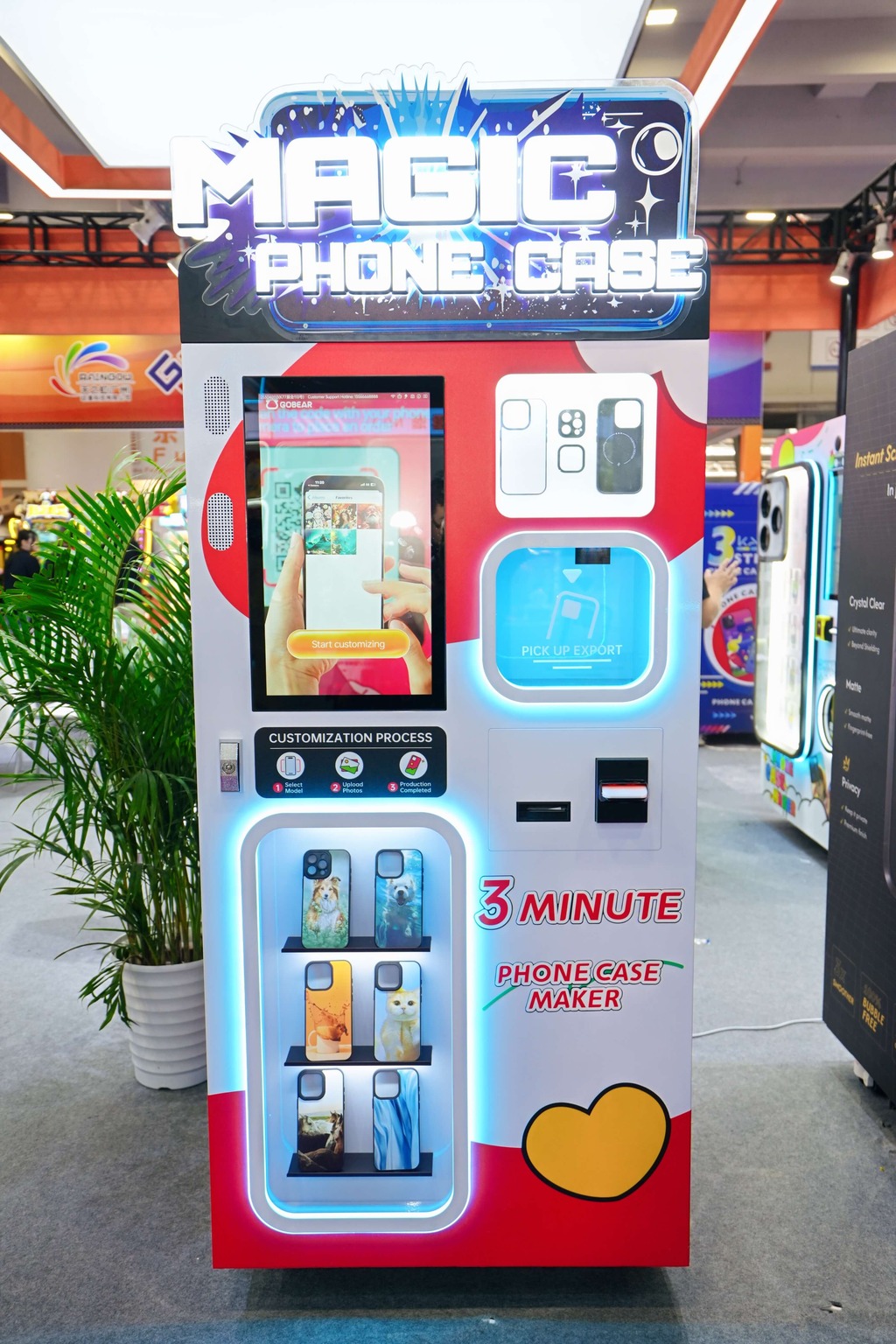
1. Location
High-footfall areas like malls, airports, universities, and tourist attractions significantly boost sales.
2. Pricing Strategy
Test different price points to maximize profit without deterring customers.
3. Machine Customization
Branded wraps, LED lighting, and user-friendly touch screens attract more buyers.
4. Marketing Efforts
Encourage customers to share their designs on social media. Offer holiday discounts or "buy one, gift one" promotions.
5. Operational Efficiency
- Use machines with remote monitoring to track sales and inventory in real time.
- Ensure quick restocking to avoid missed sales.
6 Common Mistakes That Hurt ROI
-
Poor location choice – Low traffic means low sales, regardless of machine quality.
-
Neglecting maintenance – Leads to downtime and missed sales.
-
Stale designs – Customers lose interest if styles don't change.
-
No tracking – Without sales analytics, you can't optimize your business.
7 How to Track and Optimize Your ROI Over Time
Measuring your return on investment (ROI) isn't a one-time task — it's an ongoing process that ensures your phone case vending machine business stays profitable and competitive. By regularly analyzing performance and making strategic adjustments, you can maximize earnings while minimizing costs.
1. Use Vending Management Software
- • Invest in a vending management system that tracks sales data, stock levels, and transaction history in real time.
- • Review daily, weekly, and monthly sales reports to spot trends and seasonal peaks.
- • Identify best-selling products and optimize inventory around them.
2. Monitor Location Performance
- • Compare sales across different locations to determine which spots deliver the highest ROI.
- • If a location underperforms consistently, consider renegotiating rental terms or moving the machine.
- • Test temporary high-traffic events, like festivals or expos, to find profitable new venues.
3. Adjust Pricing Strategically
- • Review profit margins regularly and adjust prices based on demand, competition, and seasonality.
- • Experiment with bundle deals or limited-time discounts to boost volume sales.
- • Avoid frequent, drastic price changes that might confuse customers.
8 Is a DIY Phone Case Vending Machine Worth It?
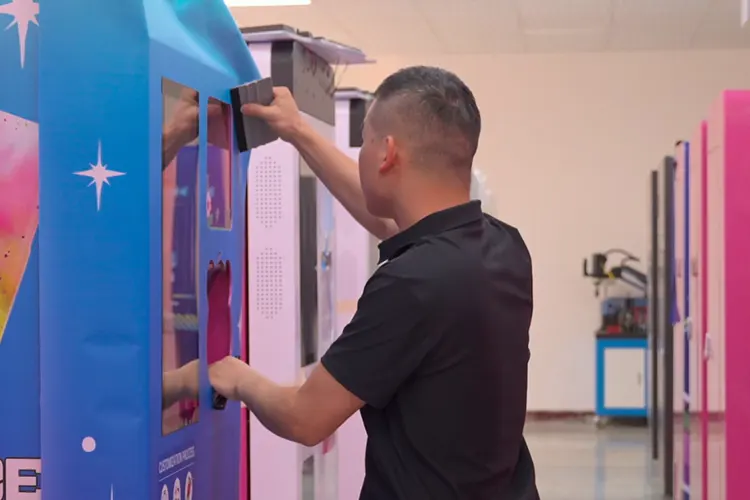
Higher Earning Potential Through Customization
- • Customers are willing to pay premium prices for personalized products.
- • Custom designs can increase the average sale price compared to pre-made cases.
- • Personalization creates a unique shopping experience, encouraging repeat purchases.
Strong Appeal to a Wide Audience
- • Attracts both practical buyers (wanting protection) and creative shoppers (wanting style).
- • Appeals to tourists who enjoy creating souvenirs on the spot.
- • Popular among younger audiences, especially students and social media users who want unique accessories.
Competitive Advantage Over Standard Vending Machines
- • Differentiates your business from others selling only pre-made cases.
- • Increases foot traffic as passersby stop to explore the customization feature.
- • Builds a brand reputation for offering innovative, engaging retail experiences.
Potential for Faster ROI
- • Higher product pricing shortens the time it takes to recover your investment.
- • Increased sales volume from both impulse buys and planned custom orders.
- • Word-of-mouth marketing from satisfied customers boosts visibility without extra cost.
9 FAQ
How much money do you need to start a phone case vending machine business?
You usually need $8,000 to $15,000. This covers the machine, setup, and first inventory. You may spend more if you choose advanced features or premium locations.
How long does it take to see a return on investment (ROI)?
Most owners see ROI in 6 to 18 months. High-traffic locations and popular designs help you recover your investment faster.
What are the biggest costs after setup?
You pay for restocking, rent, maintenance, and utilities. These costs change based on sales and location. Smart machines help you track and control these expenses.
Can you customize phone cases in the vending machine?
Yes! Many machines let customers design their own cases. This feature increases sales and attracts more buyers.
Where should you place your vending machine for the best ROI?
Place your machine in busy spots like malls, airports, or campuses. High foot traffic means more sales and faster ROI.
Conclusion
DIY phone case vending machines combine personalization, automation, and high profit margins in a way few small business ROI models can match. With the right location, pricing strategy, and operational approach, achieving a rapid ROI — sometimes in just weeks — is entirely possible.
If you're serious about entering this market, start with solid ROI calculations, choose a location that fits your target audience, and keep your product selection fresh. Done right, this can be one of the most rewarding passive income investments in today's retail landscape.
Ready to start your profitable business?
GOBEAR is a technology-driven manufacturer dedicated to revolutionizing the vending industry with AI, IoT, and unparalleled engineering.
Ready to Maximize Your Vending Machine ROI?
Get a custom quote and start your profitable phone case business today.
